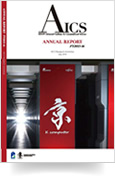Data assimilation (DA) is a cross-disciplinary science to synergize computer simulations and real-world data, based on statistical mathematics and dynamical systems theory. As computer technology advances and enables precise simulations, it will become more important to compare simulations with real-world data.
We are researching and developing advanced DA methods and their various applications, and we aim to integrate computer simulations and real-world data in the most effective way. Particularly, we tackle the challenging problems involved in developing efficient and accurate DA systems for “big simulations” with real-world big data from various sources including advanced sensors. Our specific foci include 1) theoretical and algorithmic developments for efficient and accurate DA; 2) development of DA methods and applications by taking advantage of the world-leading K computer and big data derived from advanced new sensors; and 3) the exploration of new DA applications in wider simulation fields. These advanced DA studies will enhance simulation capabilities and lead to better use of high-performance computers including the K computer.
Recent Achievements
K computer and advanced weather radar come together to predict sudden torrential rains
Using the K computer, we carried out 100 parallel simulations of a convective weather system, using the nonhydrostatic mesoscale model with 100-meter grid spacing and assimilated data from a next-generation phased-array weather radar, which was implemented in the summer of 2012 by the National Institute of Information and Communications Technology (NICT) and Osaka University. This enabled us to produce a high-resolution three-dimensional distribution map of rain every 30 seconds—120 times more rapidly than the typical hourly updated systems operated at weather prediction centers around the world today.
To test the accuracy of the system, we attempted to model a real case—a sudden storm that took place on September 11, 2014, in Kobe. The simulations were tested without observational data input, as well as with observational data incorporated every 30 seconds on 100-meter and 1-kilometer grid scales. The simulations alone were unable to replicate the rain, while the simulation incorporating observational data enabled the computer to represent the actual storm. In particular, the simulation carried out with 100-meter grids produced an accurate replication of the storm when compared to actual observations.

Distribution of thunderclouds on September 11, 2014




